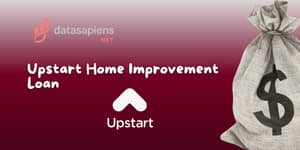
Credit cards promise convenience, perks, and financial flexibility. Yet beneath enticing offers lies a trap that can derail your financial health. Chasing rewards by maxing out cards might seem rewarding at first, but it can lead to high fees, damaging credit consequences, and mounting stress. This article explores why building strong financial habits matters more than a few extra points and offers practical strategies to protect your credit and your sanity. Understanding the pitfalls before you swipe can keep your finances on solid ground and preserve your peace of mind.
Credit utilization measures the percentage of your available credit that you’re using at any given time. Lenders view this metric critically—accounting for roughly 30 percent of your FICO score. When you approach or exceed your credit limit, your utilization spikes, signaling risk. Experts advise keeping balances below 30 percent and ideally under 20 percent of your limit.
High utilization can trigger a swift score drop, making future borrowing more expensive or out of reach. Over time, repeated high utilization can signal to creditors that you rely too heavily on borrowed money, leading to lower credit limits or additional security deposits. By maintaining low balances, you demonstrate fiscal responsibility and strengthen your financial standing over the long term.
Credit cards often dangle tempting perks: cashback offers, airline miles, hotel points, and exclusive upgrades. While these rewards can offset spending, they come with conditions. Minimum spend requirements, category limitations, and expiration dates can undermine your gains. Reward points can also be devalued unexpectedly when programs change terms or partnerships dissolve, leaving your hard-earned points worthless.
In fact, a Bankrate survey found 72 percent of cardholders carrying balances month to month still chase rewards, even as interest accrues. This chase can lead to impulse buys and inflated budgets, obscuring the true cost of pursuing benefits that may ultimately cost more than they deliver.
Maxing out a card for a few extra points carries serious hidden costs. Issuers can freeze promotional rates or claw back miles, leaving you with a high balance and no benefits in return.
Perhaps the starkest truth is that typical interest rates far outweigh reward rates. Earning 1 to 2 percent cashback hardly compensates for a 22 to 25 percent annual percentage rate. In real terms, each dollar of interest erodes your gains several times over.
Even disciplined consumers can underestimate the compounding effect of revolving debt. A seemingly small balance accrues interest on top of interest, creating a snowball effect that quickly erases any small reward gains. As Ted Rossman of Bankrate warns, “It doesn’t make sense to pay 20, 25 or 30 percent in interest just to earn a few percentage points in cash back or travel rewards.” Applying this math to your own spending can reveal the true cost of chasing perks.
Rewards programs tap into deep-seated psychological triggers: the thrill of a good deal, the joy of unlocked status, and the fear of missing out. This combination can lead to discretionary purchases you wouldn’t have made otherwise. Young adults and high-income earners often fall prey, believing they can outpace interest with points, when in reality they accelerate their debt.
Beyond the numbers, the emotional toll can be significant. Constant worry about balances can lead to anxiety, sleepless nights, and strained relationships around money. By addressing the root causes of impulse buys, you regain control over both your budget and your mental well-being.
When you pay your balance in full each billing cycle, rewards become genuine savings rather than costly incentives. Maintaining a simple system—automated payments and monthly reviews—ensures you stay on track without sacrificing the benefits of a well-chosen rewards card. Select cards that align with your spending habits. If you dine out frequently, choose one with elevated restaurant rewards; if you travel often, look for travel credits and air mile bonuses. Customizing your wallet to your lifestyle ensures you earn the most while avoiding irrelevant perks that encourage wasteful spending.
These alternatives help you avoid the pitfalls of credit and promote a mindset of living within your means. Building an emergency fund of even a few hundred dollars can prevent the need to rely on high-interest credit for unexpected costs, keeping your utilization low and your financial safety net intact.
If you find yourself at or above your credit limit, take immediate action. Stop making new charges and focus on reducing the balance. Aim to bring utilization back below 30 percent as quickly as possible. Prioritize high-interest cards first, and consider balance transfers to cards with introductory 0 percent APR offers—just be mindful of transfer fees and expiration dates. Reach out to your card issuer and explain your situation; some providers offer hardship programs with lowered interest rates or payment plans.
High balances can mask shady practices like unauthorized subscriptions or fraudulent transactions. Regularly review statements to catch unexpected charges early. Federal law limits your liability for unauthorized credit card transactions, but prompt reporting is essential. Setting up account alerts and two-factor authentication adds layers of security. Consider freezing your card if suspicious activity arises, then unfreeze once resolved. Many issuers allow temporary holds through their mobile apps.
Ultimately, avoiding maxed-out cards isn’t about sacrificing all credit card perks. It’s about balancing immediate rewards against long-term financial health. By respecting your limits, paying off balances, and building a resilient budget, you transform cards from potential pitfalls into genuine tools for convenience and growth. Pay off the balance in full each month and watch your credit score rise, stress diminish, and financial freedom expand.
References













